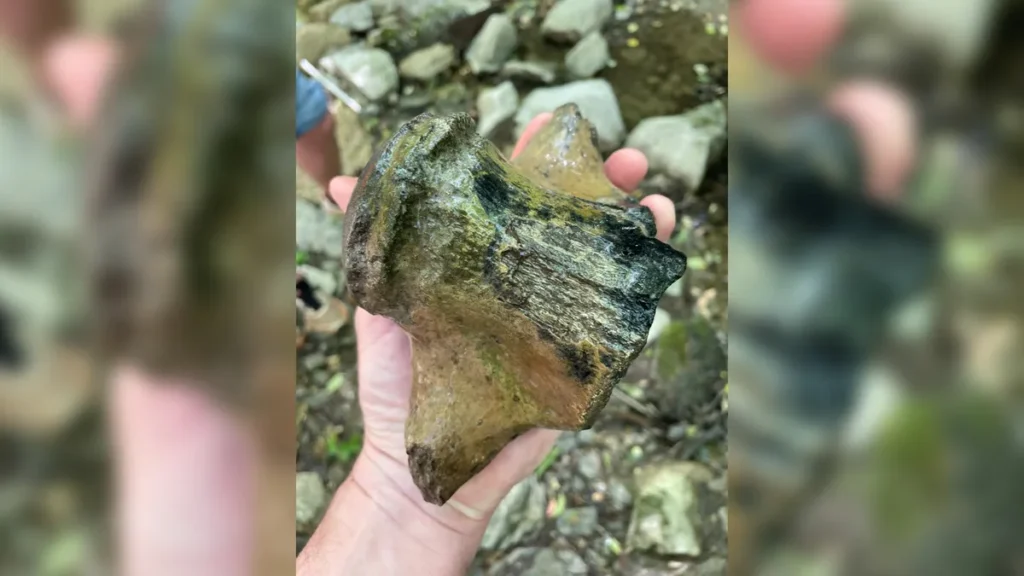Fósil de ‘dragón marino’ gigante podría ser el mosasaurio más grande descubierto en Misisipi
The fossil, which consists of a single vertebra from Mosasaurus hoffmanni, is believed to represent a creature that measured at least 30 feet (9 meters) long, according to a report from the Hattiesburg American.
Mosasaurus, often dubbed the “sea dragon,” dominated the oceans at the tail end of the Cretaceous period, approximately 145 million to 66 million years ago. This newly discovered fossil is thought to belong to one of the largest — if not the largest — mosasaur species known.
On April 15, James Starnes, a geologist with the Mississippi Department of Environmental Quality, discovered the fossil protruding from a stream bed. Starnes and fellow geologist Jonathan Leard carefully extracted the vertebra from the sediment.
“I immediately knew what it was, but was completely awe struck by its size,” Starnes remarked. “The feeling you get when you find a fossil, even as a professional, never gets old. But when you find something you have never seen before, the elation can be overwhelming.”
The mosasaurs were a diverse group of marine reptiles. While researchers are still determining the sizes of the largest mosasaur species, estimations suggest that some could reach lengths of approximately 50 feet (15 meters). One notable specimen, a skull of M. hoffmanni, has been estimated at around 56 feet (17 meters) long, as noted in a 2014 study in the journal Proceedings of the Zoological Institute RAS.
The newly discovered vertebra fossil measures more than 7 inches (18 centimeters) wide at its widest point. Starnes and his team compared it to the largest mosasaur remains held in the Mississippi Museum of Natural Science, which include jaws, skull portions, and a tooth. While the jaws and skull appeared to belong to a smaller individual, the tooth seemed comparable in size to the new specimen, suggesting that this fossil may belong to one of the largest known in the state.
“It may represent the largest,” Starnes stated. “The lumbar vertebra we found is a good indicator of the relative size of the animal. This is the biggest one that I have ever encountered.”
M. hoffmanni was an apex predator, using its large jaws and cone-shaped teeth to hunt a variety of prey, including fish, sharks, sea birds, and even other mosasaurs. Notably, remains of mosasaurs have been discovered in the fossilized stomachs of other mosasaurs.
The giant mosasaur that left this particular vertebra likely thrived in Mississippi, which during the late Cretaceous was submerged in a warm, shallow tropical sea teeming with life, including a variety of sharks, fish, marine lizards, and ammonites. As Starnes elaborated, “Pterosaurs and even some birds would have been flying overhead while a variety of both plant and meat-eating dinosaurs of different sizes and kinds would have been walking the shorelines and through the wooded forests along the coastal estuaries.”
As one of the last mosasaurs, M. hoffmanni went extinct during the cataclysmic event caused by the Chicxulub asteroid, which struck Earth 66 million years ago. The aftermath led to the collapse of the rich marine ecosystems that mosasaurs depended upon, bringing to an end the reign of these dominant ocean predators.

